Abstract
Dipeptide variants of alafosfalin (L-alanyl-L-1-aminoethylphosphonic acid) with substantial differences in potency and antibacterial spectrum in vitro and in vivo have been synthesized. Certain dipeptides with alternatives to the L-alanyl residue had broader antibacterial spectra; activity against Pseudomonas aeruginosa was included. Some compounds had better in vivo activity than alafosfalin when introduced into infected rodents orally, but for the majority of the more active phosphonodipeptides, parenteral administration was more effective. Certain oligopeptides derived from the more active phosphonodipeptides possessed good in vitro activity against an extended range of organisms; they included Haemophilus influenzae, Streptococcus faecalis, and Streptococcus pneumoniae. The in vivo activity of some of these phosphono-oligopeptides was significantly greater than that of the parent dipeptide and correlated well with the in vitro results. This indicates that phosphono-oligopeptides exert part of their in vivo action directly, in addition to that arising from smaller peptides produced by peptidase cleavage.
Full text
PDF

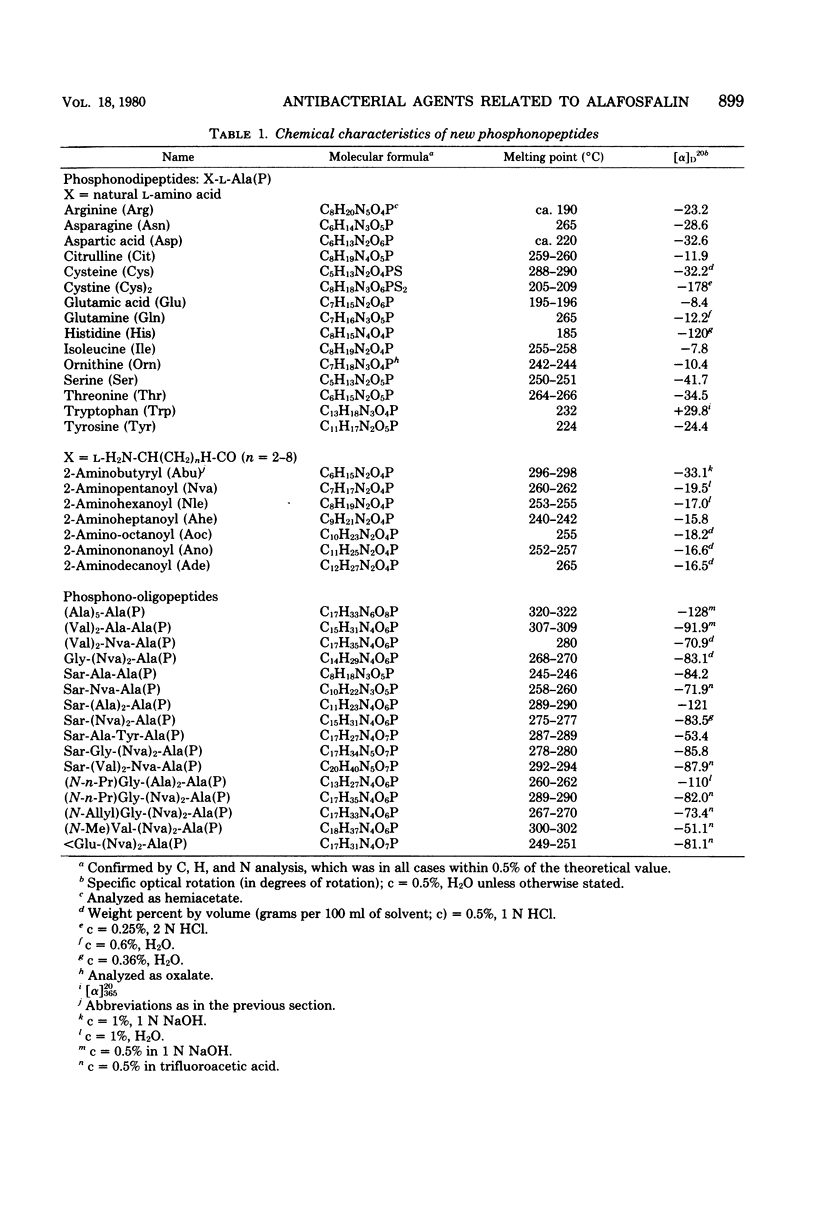
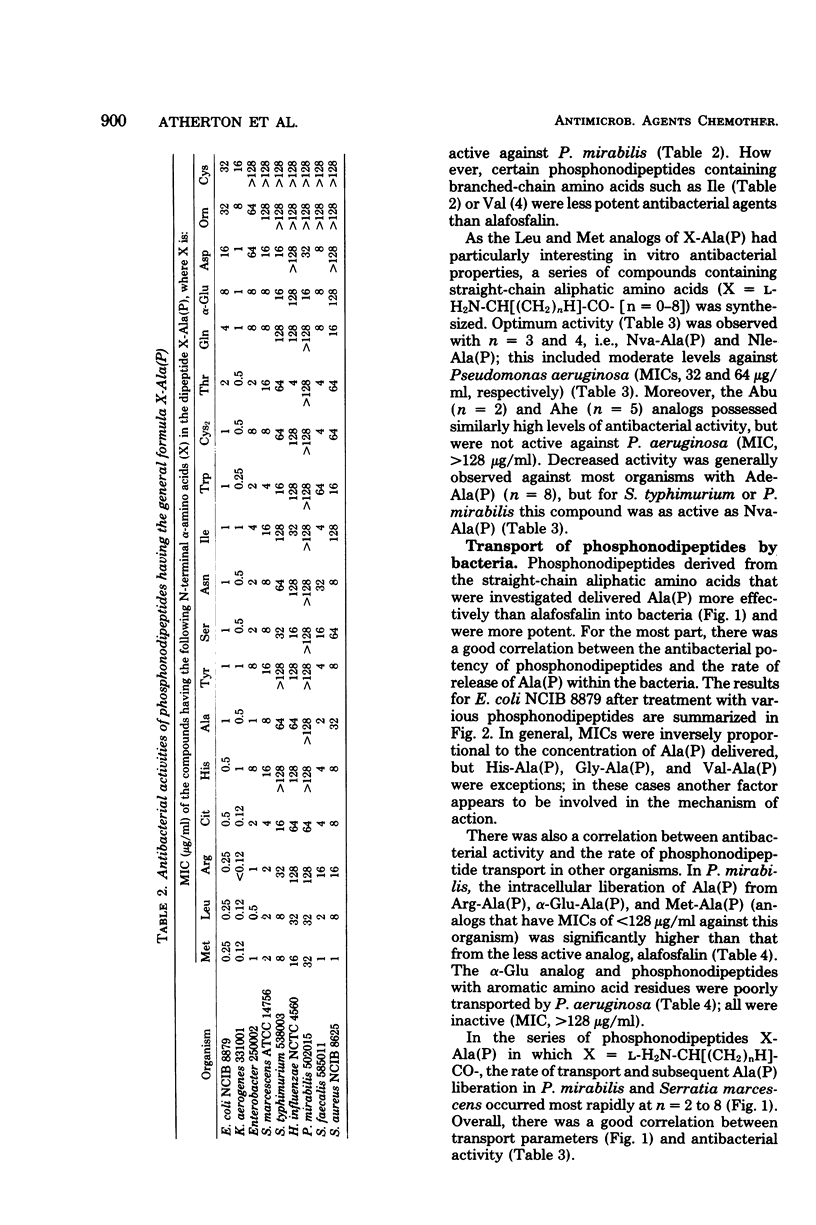
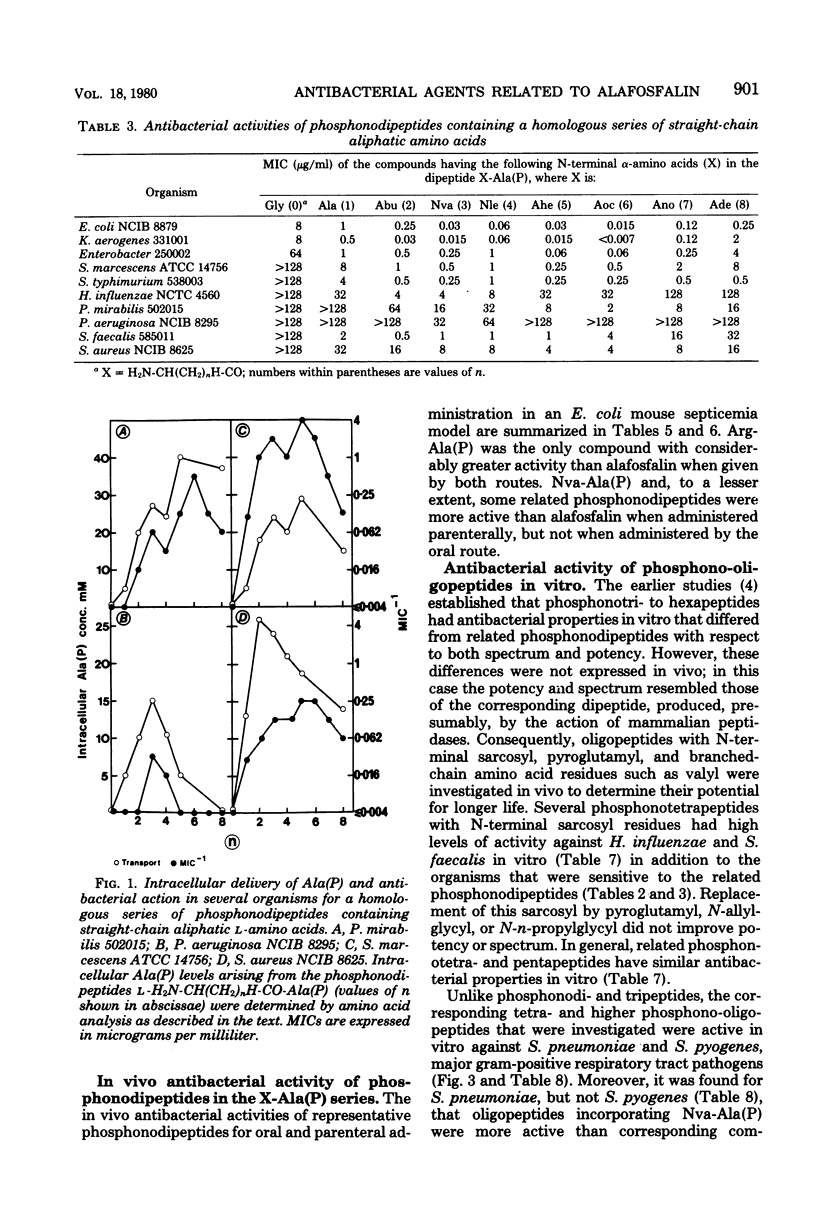
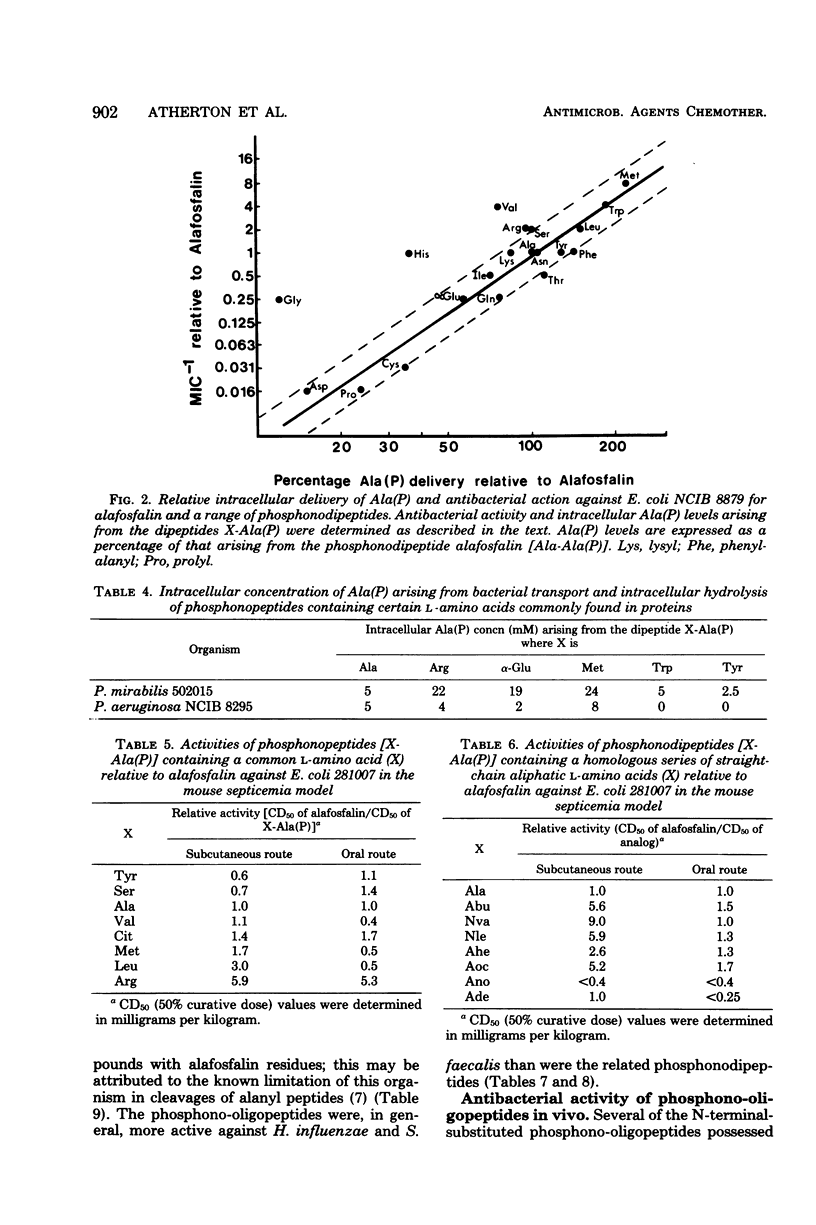
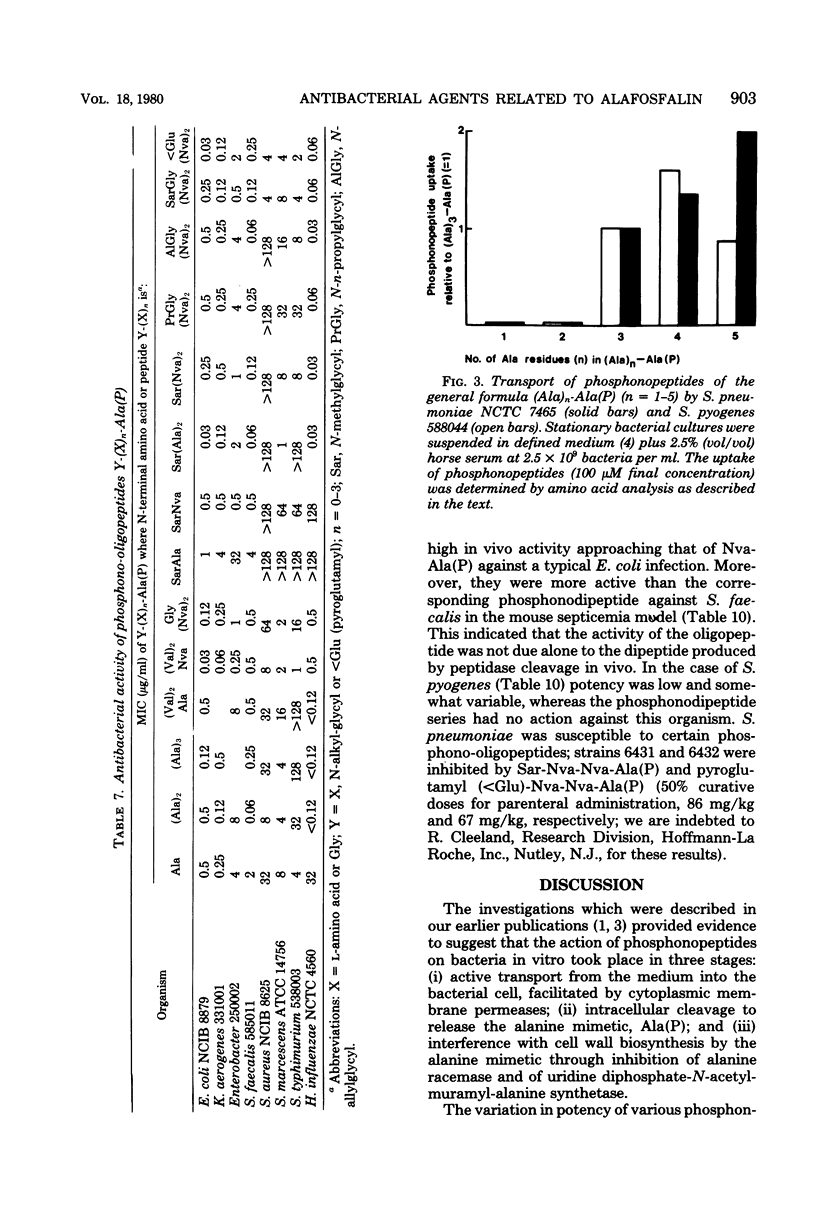
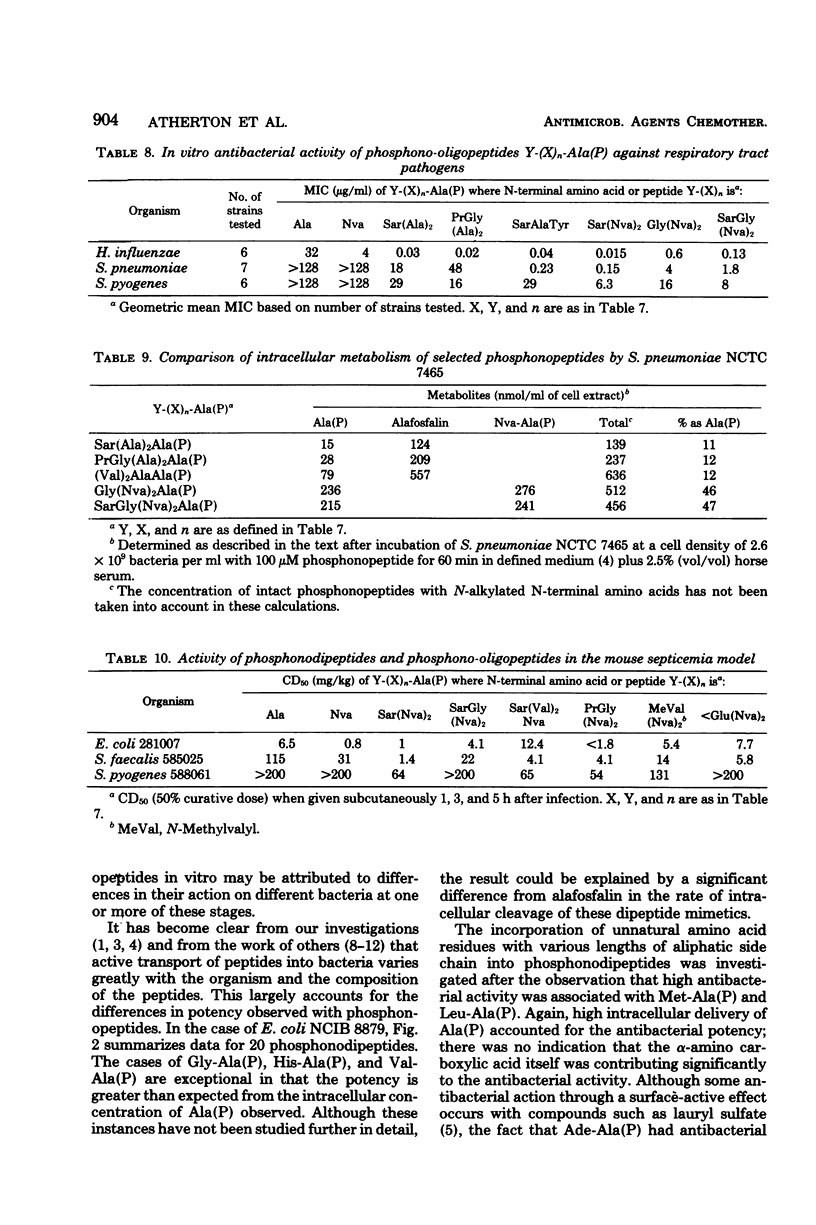
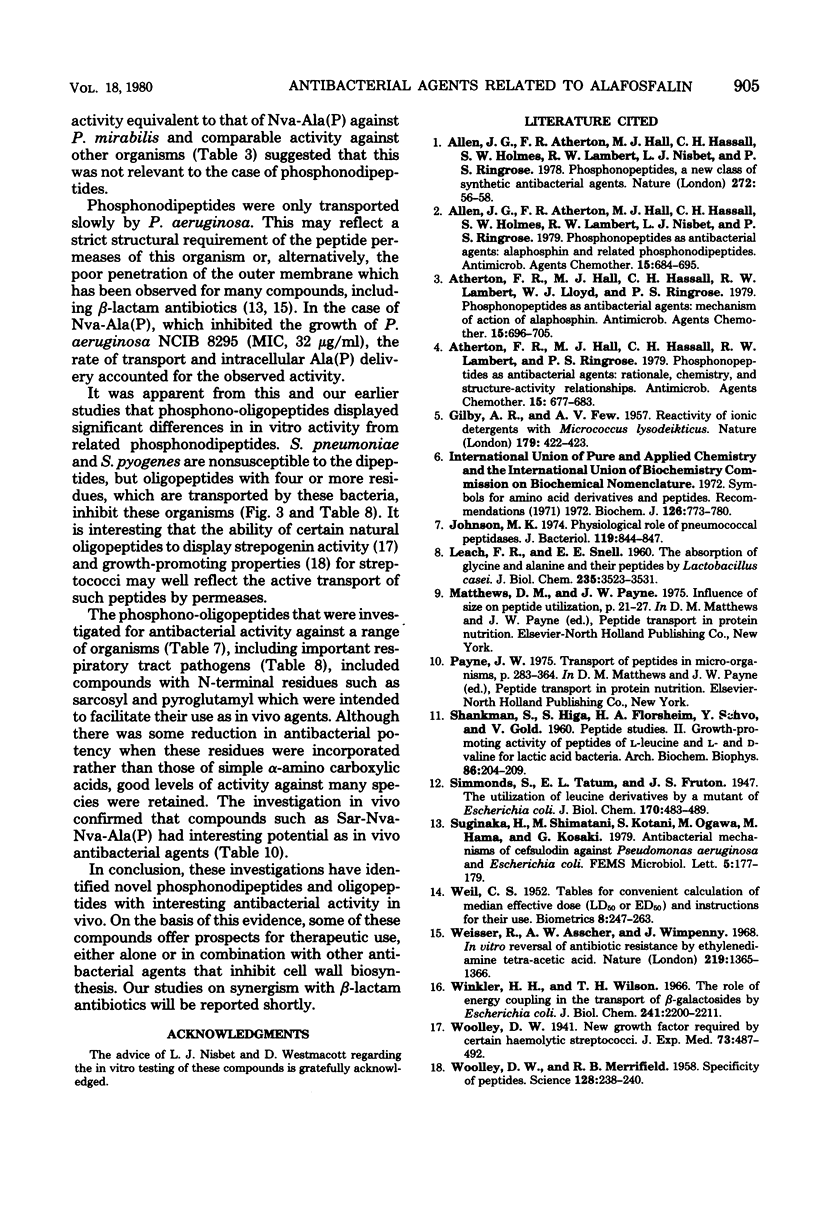
Selected References
These references are in PubMed. This may not be the complete list of references from this article.
- Allen J. G., Atherton F. R., Hall M. J., Hassall C. H., Holmes S. W., Lambert R. W., Nisbet L. J., Ringrose P. S. Phosphonopeptides as antibacterial agents: alaphosphin and related phosphonopeptides. Antimicrob Agents Chemother. 1979 May;15(5):684–695. doi: 10.1128/aac.15.5.684. [DOI] [PMC free article] [PubMed] [Google Scholar]
- Allen J. G., Atherton F. R., Hall M. J., Hassall C. H., Holmes S. W., Lambert R. W., Nisbet L. J., Ringrose P. S. Phosphonopeptides, a new class of synthetic antibacterial agents. Nature. 1978 Mar 2;272(5648):56–58. doi: 10.1038/272056a0. [DOI] [PubMed] [Google Scholar]
- Atherton F. R., Hall M. J., Hassall C. H., Lambert R. W., Lloyd W. J., Ringrose P. S. Phosphonopeptides as antibacterial agents: mechanism of action of alaphosphin. Antimicrob Agents Chemother. 1979 May;15(5):696–705. doi: 10.1128/aac.15.5.696. [DOI] [PMC free article] [PubMed] [Google Scholar]
- Atherton F. R., Hall M. J., Hassall C. H., Lambert R. W., Ringrose P. S. Phosphonopeptides as antibacterial agents: rationale, chemistry, and structure-activity relationships. Antimicrob Agents Chemother. 1979 May;15(5):677–683. doi: 10.1128/aac.15.5.677. [DOI] [PMC free article] [PubMed] [Google Scholar]
- Johnson M. K. Physiological roles of pneumococcal peptidases. J Bacteriol. 1974 Sep;119(3):844–847. doi: 10.1128/jb.119.3.844-847.1974. [DOI] [PMC free article] [PubMed] [Google Scholar]
- LEACH F. R., SNELL E. E. The absorption of glycine and alanine and their peptides by Lactobacillus casei. J Biol Chem. 1960 Dec;235:3523–3531. [PubMed] [Google Scholar]
- SHANKMAN S., HIGA S., FLORSHEIM H. A., SCHVO Y., GOLD V. Peptide studies. II. Growth-promoting activity of peptides of L-leucine and L- and D-valine for lactic acid bacteria. Arch Biochem Biophys. 1960 Feb;86:204–209. doi: 10.1016/0003-9861(60)90405-7. [DOI] [PubMed] [Google Scholar]
- WOOLLEY D. W., MERRIFIELD R. B. Specificity of peptides; new aspects of the specificity of peptides with vitamin and hormone action are described. Science. 1958 Aug 1;128(3318):238–240. doi: 10.1126/science.128.3318.238. [DOI] [PubMed] [Google Scholar]
- Weiser R., Asscher A. W., Wimpenny J. In vitro reversal of antibiotic resistance by ethylenediamine tetraacetic acid. Nature. 1968 Sep 28;219(5161):1365–1366. doi: 10.1038/2191365a0. [DOI] [PubMed] [Google Scholar]
- Winkler H. H., Wilson T. H. The role of energy coupling in the transport of beta-galactosides by Escherichia coli. J Biol Chem. 1966 May 25;241(10):2200–2211. [PubMed] [Google Scholar]


